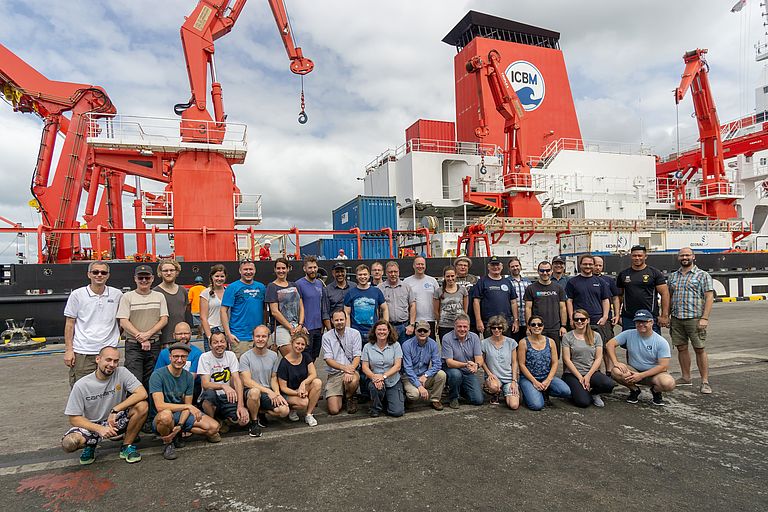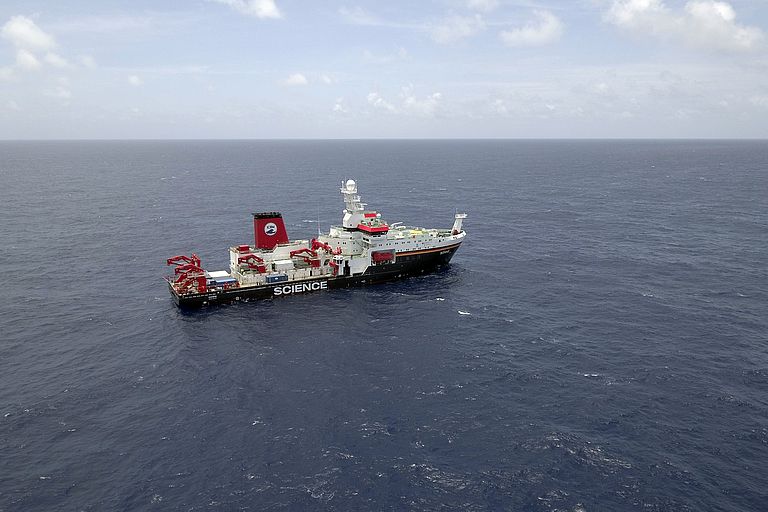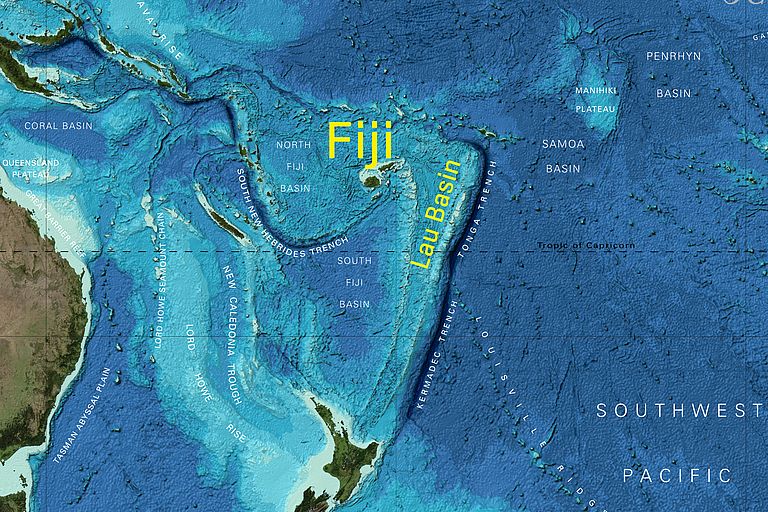Christmas in the Western Pacific
Kiel Marine Scientists investigate the birthplace of a continent with RV SONNE
Not many areas exist on our planet where the birth of a new continent can be observed. The Lau Basin in the Southwest Pacific, located between the islands of Fiji and Tonga, is such a region. The basin, with an area roughly the size of the Federal Republic of Germany, is a puzzle of many small earth plates. “They are assembled like a mosaic and offer the unique opportunity to gain an insight into the formation of new earth crust,” says geologist Prof. Dr. Mark Hannington, Professor for Marine Mineral Resources at the GEOMAR Helmholtz Centre for Ocean Research Kiel. He is chief scientist of a seven-week expedition with the German research vessel SONNE into the Lau Basin. The voyage starts in Fiji on 11 December.
Where new earth crust forms, new metal deposits may also be created. More than half of the metal ore deposits mined on land today were originally formed as submarine deposits. These complex processes are not easy to observe. That is why a wide range of different measuring systems is necessary to obtain a comprehensive overview.
“This is the first time that we have brought together a team of petrologists, geophysicists, geochemists, geologists and mineralogists on board the SONNE with the common goal of understanding processes in the birth of a tectonic plate and the formation of metal deposits," explains co-chief scientist Prof. Dr. Heidrun Kopp from GEOMAR.
The team uses a variety of measuring instruments during the trip. In addition to autonomous underwater vehicles, seismic and magnetic instruments are deployed to obtain an image of the earth's crust and upper mantle and thus investigate deep processes. In addition, hot vents on the seafloor and the underlying hydrothermal systems will be examined in detail and samples taken to better understand the formation of mineral deposits.
In order to fulfill the extensive and dense research program, the team onboard the SONNE will continue to work at sea over Christmas and New Year’s Eve. “Especially for some of the younger colleagues and students, it will be a new experience to celebrate Christmas and New Year's Eve on board far away from family and friends,” says Professor Kopp. “But as the research on board runs around the clock, there will hardly be time for homesickness. On the contrary, this Christmas will certainly be remembered for a long time, because this project is very special for us as scientists".
With the multidisciplinary approach, the team will investigate systems and processes on the ocean floor that are unique in the world. “We will be able to investigate detailed structures as well as plate tectonic processes,” says Professor Hannington. One goal is to identify when the emergence of the ocean crust is accompanied by magmatic and hydrothermal processes that can lead to the formation of mineral deposits. “Our work is therefore a mixture of applied aspects and basic research,” he sums up.
The group on board the SONNE includes researchers from GEOMAR and students from Kiel University, scientists from the Federal Institute for Geosciences and Natural Resources in Hanover and the Helmholtz Centre Potsdam German Geosciences Centre, as well as international participants from the Netherlands, Canada, Australia and Tonga. The team combines both its scientific expertise and the complex research infrastructure. The voyage of the SONNE will end on 26 January 2019 in Suva, Fiji.
Expedition at a glance:
FS SONNE expedition SO267
Project: ARCHIMEDES I
Chief Scientists: Prof. Dr. Mark Hannington (GEOMAR)/Prof. Dr. Heidrun Kopp (GEOMAR)
Start: 11 December 2018 in Suva (Fiji)
Working area: Lau Basin, SW Pacific
End: 26 January 2019 in Suva (Fiji)
High-res images:
The usage of the image material provided with this press release is free for editorial purposes in conjunction with the content of this press release.
Contact:
Jan Steffen (GEOMAR, Communication and Media), Tel.:+49 0431 600-2811, presse(at)geomar.de





